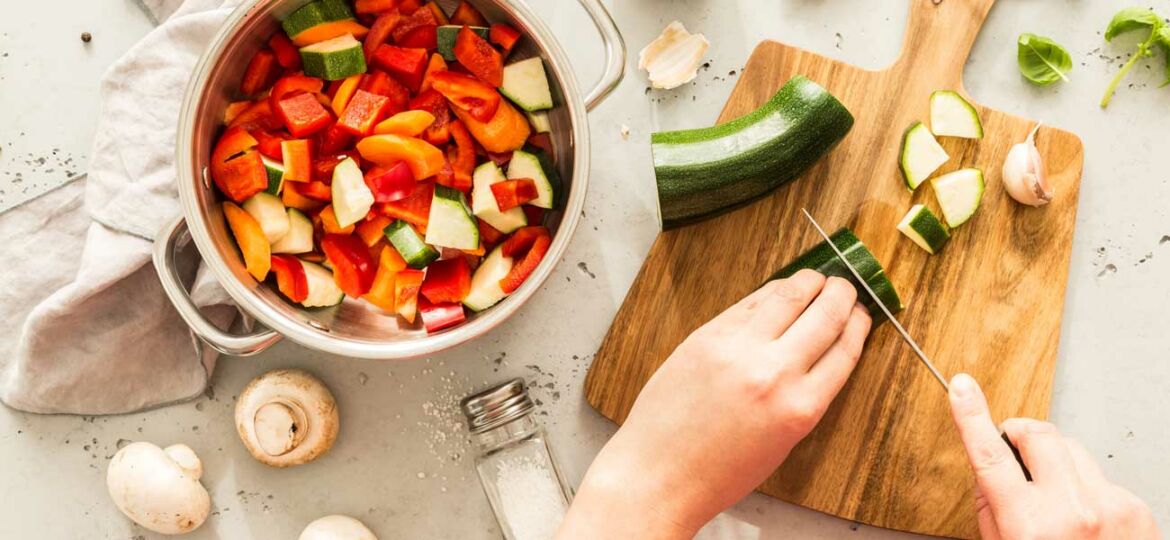
The Best Ways to Retain Micronutrients When Cooking Vegetables
Many people wonder, while cooking vegetables, how many of the micronutrients they are “killing” in the process. The truth of the matter is that certain micronutrients, the vitamins and minerals that the body needs to receive in small quantities in order for organs to function optimally, can indeed be degraded or destroyed through certain cooking practices. But the good news is that some ways of cooking actually improve their performance.
The benefits of cooking vegetables
Although the raw “uncooking” trend took the world by storm around a decade ago, and continues to be considered a healthy way of eating by many, cooking food has been shown to improve both digestion and absorption of vitamins and minerals. Cooking tomatoes, for example, facilitates the body in absorbing lycopene, which has high antioxidant qualities, while cooking carrots and sweet potatoes makes beta carotene (which is a precursor to vitamin A) bioavailable. Similarly, cooking can boost the antioxidative compounds in asparagus, mushrooms, broccoli and cabbage, while phytonutrients like Caretenoids in red, yellow and orange vegetables are also better absorbed when they’re heated.
The negative results of cooking vegetables
Research has shown that the micronutrients in water-soluble vitamins (B & C vitamins) are reduced when cooked, because being “unstable” they leech out of vegetables when they’re in water. Vitamin C levels can decrease by up to 55% when cooked. Polyphenols (present in broccoli, spinach, Brussels sprouts and kale) are also likely to be degraded when heavily heated.
Top tips for maximizing nutrient retention when cooking
There are several ways you can prevent vegetables from degrading when you cook them, so you can have a diet rich in vitamins and minerals. These are the following:
- When possible, cook vegetables whole and cut them after cooking to reduce their exposure to heat and water.
- Minimize the quantity of water you use when boiling or poaching to prevent the loss of B & C vitamins.
- Ideally don’t peel vegetables before cooking them to preserve their micronutrient and fiber compounds.
- Once cooked, try to consume your veggies within 24/36 hours as exposure to air decreases their micronutrient content even further.
The three best cooking methods for retaining micronutrients
Steaming
If you believe steaming vegetables is the best way to preserve their vitamins and minerals, you are correct! Studies have shown that when steamed, vegetables lose only 10-15% of their vitamin C compounds.
Boiling
As a rule, if you keep vegetables submerged in water, the water soluble vitamins in them will leech out. If, however you are making a soup or stew, which means you are consuming the liquid the veggies have cooked in, you will still be receiving 100% of their micronutrients.
Microwaving
This will come as a great surprise to most, but microwaving (also derogatively called “newking” by some) has actually been shown to be one of the best ways to preserve micronutrients through cooking. When compared to boiling, baking and pressure cooking, microwaving was the best way to preserve antioxidants in asparagus, garlic, pulses, artichokes, beets, onions and spinach. Meanwhile it actually increased the activity of antioxidants in corn, eggplant, Swiss chard and bell pepper, while antioxidant levels shrank significantly when these veggies were boiled or pressure cooked. Spinach was shown to retain its folate levels when microwaved, while when boiled, lost most of its B vitamin.
Other methods
When sautéing/stir frying, or roasting/baking, experts advise cooking vegetables on medium to low heat, for as little time as possible. When sautéing, it is recommended that you use olive oil, when cooking at a low to medium heat, in order to preserve micronutrients like vitamins A, C and B, and using avocado oil for high heat as it has a higher smoke point.
You may have already guessed it, but frying is the least healthy way to cook, and causes the most damage to micronutrients.


